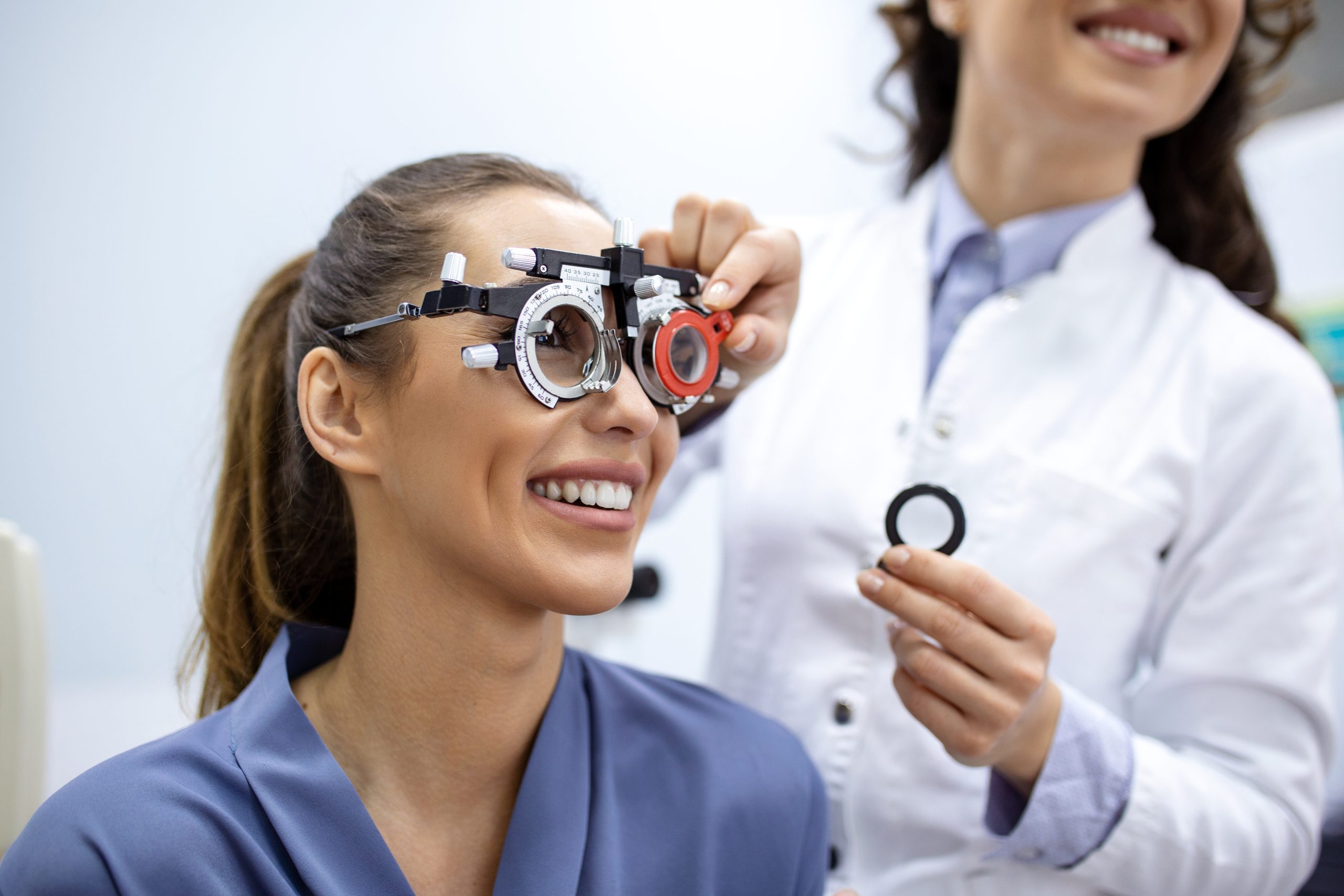Exactly How an Eye Doctor Can Help Prevent Vision Issues in Chino
Exactly How an Eye Doctor Can Help Prevent Vision Issues in Chino
Blog Article
Checking Out the Latest Technological Advancements in Optometry and What They Mean for Eye Doctors
From the accuracy of Optical Coherence Tomography to the nuanced understandings offered by AI-driven diagnostic tools, these technologies are setting new criteria in patient assessment and treatment. As these improvements penetrate the method, eye doctors are encountered with the challenge of accepting these tools to improve individual end results.
Technologies in Diagnostic Tools
Advancing the field of optometry, developments in diagnostic tools have changed the means eye treatment specialists assess and diagnose visual impairments and ocular problems. The previous decade has actually experienced considerable technical improvements, making it possible for even more exact and detailed assessments. Optical Coherence Tomography (OCT), for example, gives high-resolution cross-sectional images of the retina, permitting for the very early discovery of conditions such as glaucoma and age-related macular degeneration. This non-invasive imaging strategy has actually become important in modern optometric method.
One more trick advancement is the intro of sophisticated corneal topography systems, which map the surface area curvature of the cornea with precision. These tools are particularly advantageous for fitting get in touch with lenses and detecting corneal problems. Electronic retinal imaging has transformed conventional ophthalmoscopy, offering in-depth, breathtaking views of the retina that help with thorough aesthetic exams.
The development of wavefront aberrometry has actually also been essential, allowing the evaluation of refractive mistakes with unrivaled precision (Eye Doctor Optometrist). This modern technology aids in personalizing rehabilitative lenses and improving surgical end results for refractive surgeries. Collectively, these diagnostic advancements empower optometrists to provide remarkable person treatment, ensuring early intervention and tailored therapy strategies, ultimately boosting aesthetic wellness results
AI in Individual Administration
Building on the foundation of sophisticated analysis devices, the consolidation of man-made intelligence (AI) in patient management stands for a transformative jump for optometry. AI systems are progressively employed to enhance performance, precision, and customization in client care. By analyzing vast quantities of information, AI can determine patterns and predict prospective ocular problems, allowing eye doctors to customize interventions better. This capacity is vital in handling chronic eye conditions such as glaucoma and diabetic retinopathy, where very early detection and continual tracking are key.
Moreover, AI-driven systems help with structured client communications and administrative procedures. Automated scheduling, online examinations, and personalized follow-up plans not just improve individual fulfillment yet likewise enhance time monitoring for specialists. These systems can triage individuals based upon the urgency of their problems, making certain that those in crucial demand obtain prompt interest.
Moreover, AI improves decision-making by supplying optometrists with evidence-based suggestions and therapy paths. By incorporating data from electronic health and wellness documents, AI devices offer insights that notify scientific choices, reducing the risk of errors and enhancing individual end results. As AI proceeds to advance, its role in patient management will likely expand, reshaping the landscape of optometric care.
Developments in Retinal Imaging
In the world of optometry, retinal imaging has witnessed remarkable technical innovations that are enhancing diagnostic capacities and patient care. Advancements such as Optical Coherence Tomography (OCT) and fundus photography have actually changed how eye doctors evaluate the retina and visualize.
Boosted imaging techniques like OCT angiography are more refining diagnostic accuracy. Eye Doctor. Such innovations facilitate the recognition of min retinal changes that might signify illness development.
Additionally, improvements in expert system are boosting retinal imaging by enabling automated evaluation of large datasets. These systems aid optometrists in identifying patterns a measure of pathology, thus boosting diagnostic accuracy and efficiency. Collectively, these advancements are changing retinal imaging right into a cornerstone of modern eye care, improving results and broadening restorative possibilities.
Teleoptometry's Growing Function
Teleoptometry is significantly coming to be a crucial element of eye care, driven by innovations in electronic communication and diagnostic devices. This is especially beneficial in underserved and rural locations where access to specialized eye care is typically restricted.
The integration of expert system (AI) further boosts teleoptometry, allowing the analysis of aesthetic data and assisting in the detection of eye problems such as glaucoma and diabetic retinopathy. AI-powered formulas can rapidly interpret complicated imaging data, providing optometrists with beneficial insights that strengthen scientific decision-making.
Furthermore, teleoptometry supports connection of treatment through smooth assimilation with electronic health documents (EHRs), allowing eye doctors to maintain extensive client backgrounds. This guarantees that people get personalized and constant treatment also when seeking advice from different experts.
In spite of these benefits, difficulties continue to be, consisting of making certain information security and try this out handling individual assumptions. Teleoptometry represents a considerable stride in the direction of even more easily accessible, reliable, and patient-centered eye treatment. As modern technology evolves, its role is poised to expand even more.

Future Fads in Eye Treatment
A myriad of ingenious patterns is established to reshape the future of eye care, driven by technological advancements and the developing requirements of clients. One considerable pattern is the combination of expert system (AI) in diagnostics, which assures to enhance the precision and performance of eye assessments. AI formulas can examine vast quantities of information from retinal images, potentially detecting problems like diabetic person retinopathy and glaucoma earlier than pop over to these guys traditional methods.
Furthermore, tailored medication is gaining traction in optometry, with hereditary screening notifying personalized treatment strategies. This technique intends to maximize client outcomes by tailoring interventions to private hereditary accounts. Wearable technology, such as clever call lenses, is likewise imminent, providing real-time monitoring of intraocular stress or glucose levels, thus supplying constant understandings into systemic and eye health.
The fostering of enhanced fact (AR) and virtual truth (VIRTUAL REALITY) in training and client education is an additional arising fad. These technologies use immersive experiences that can boost understanding and abilities both for people and eye doctors. As these fads develop, eye doctors have to stay abreast of technological improvements to give cutting-edge care, guaranteeing improved client end results and fulfillment in the vibrant landscape of eye care.
Final Thought

Jointly, these diagnostic innovations empower eye doctors to deliver superior person treatment, guaranteeing early intervention and customized treatment strategies, eventually boosting aesthetic health end results.
As these modern technologies proceed to progress, eye doctors need to adapt and include them right into technique, inevitably maximizing workflow efficiency and elevating the criterion of eye treatment provided to individuals.
Report this page